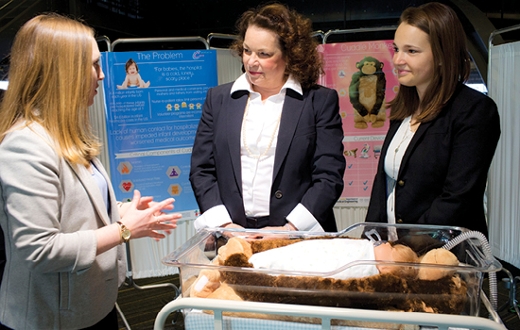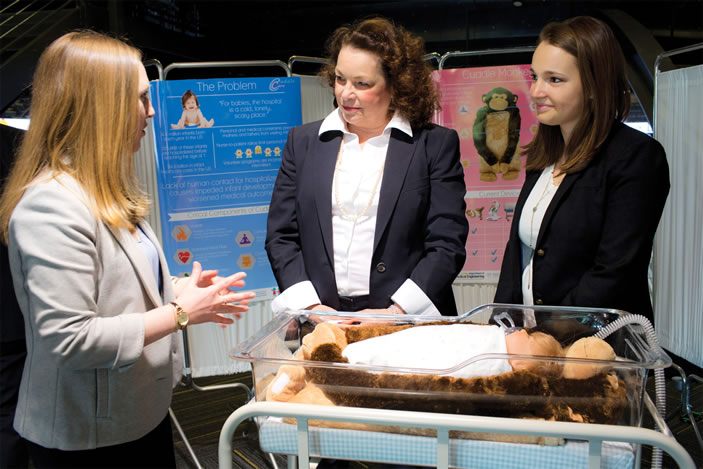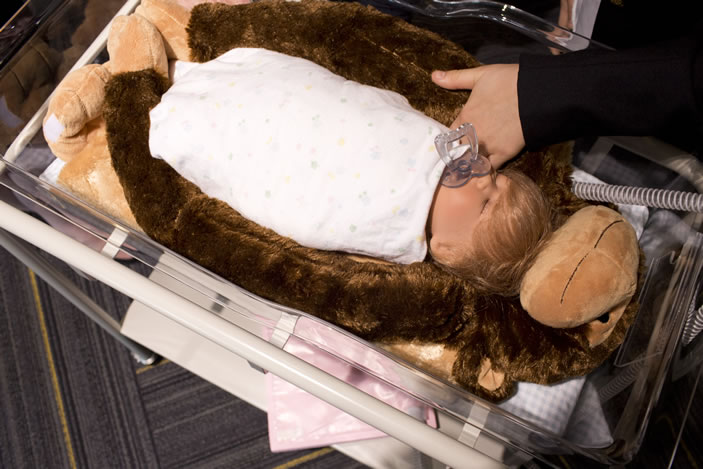What is suffering? It’s a question that inspired a team of Georgia Institute of Technology students to bring a long-held idea to life for Sharron Close PhD MS CPNP-PC, a research assistant professor and pediatric nurse practitioner in the Nell Hodgson Woodruff School of Nursing.
Last spring, Close mentored four biomedical engineering (BME) students as they developed a mechanized stuffed animal to comfort sick children 12 months and younger. The students equipped a "Cuddle Care" prototype — a stuffed monkey with arms long enough to bolster or wrap around a child — that breathes, thumps with a heartbeat, and emits radiant heat.
Close has carried the Cuddle Care idea with her since nursing school, when she cared for a 3-year-old boy with AIDS on an oncology unit. Tumors covered his small body, and his only relief came when Close and others held him. The child’s mother, who was HIV-positive and had several young children, rarely came to visit. Close agonized over the young boy’s future when her clinical rotation on the unit ended.
"I thought there must be a way to comfort a child who was suffering this way," she says. "I reflected back on what was providing him comfort. As I held him in a rocking chair, I was taking pressure off of his tumors. We were also exchanging heat. I could feel his heat up against my chest, and he was feeling the comfort of my heartbeat and being held and squeezed. He was made to feel safe in the arms of what should have been a parent but was not possible for this little boy."
She thought of developing a device mimicking those sensations that would wrap around a child to provide warmth and comfort. She applied for a provisional patent but put the device on hold for several years until she came to Emory, where the idea resurfaced. Close consulted the university’s Office of Technology Transfer, which connected her with Georgia Tech. Students there embraced her idea and made it their capstone project.
"We wanted to provide comfort to those who need it most," says BME student Matt Kee, who sees great potential for the "Cuddle Care" device in the pediatric health care market. Now under way are a patent application and development of a prototype for testing in the clinical setting.




